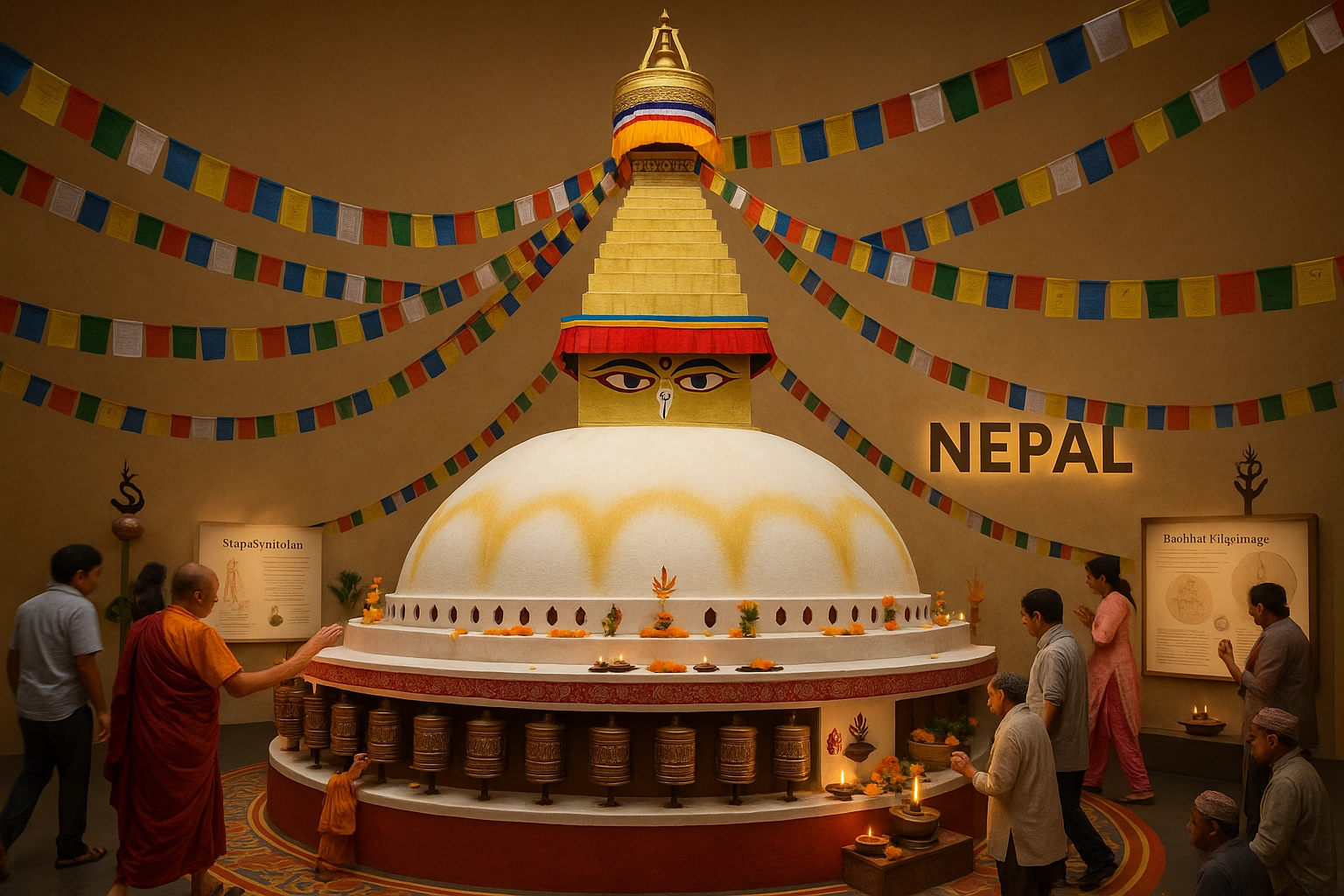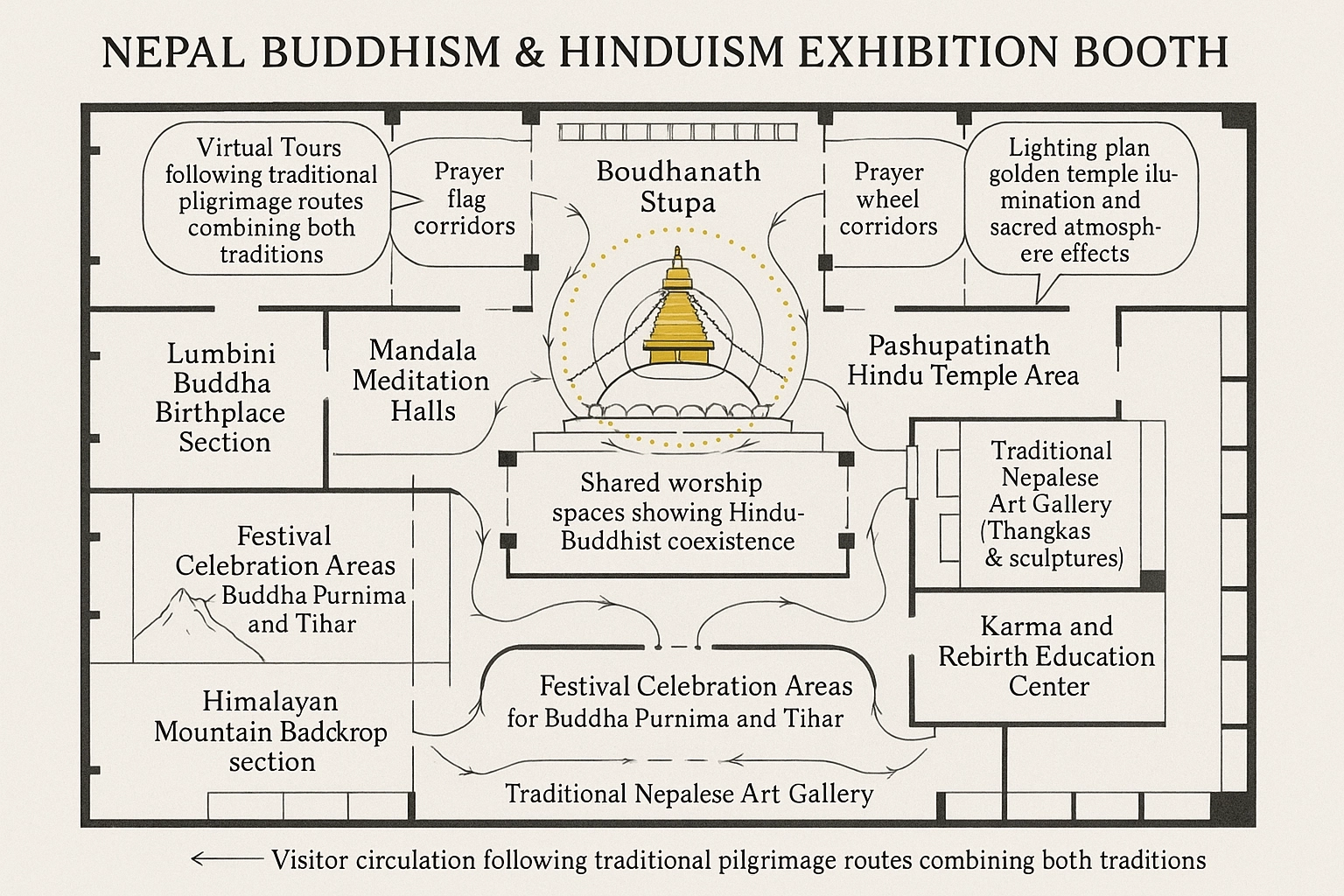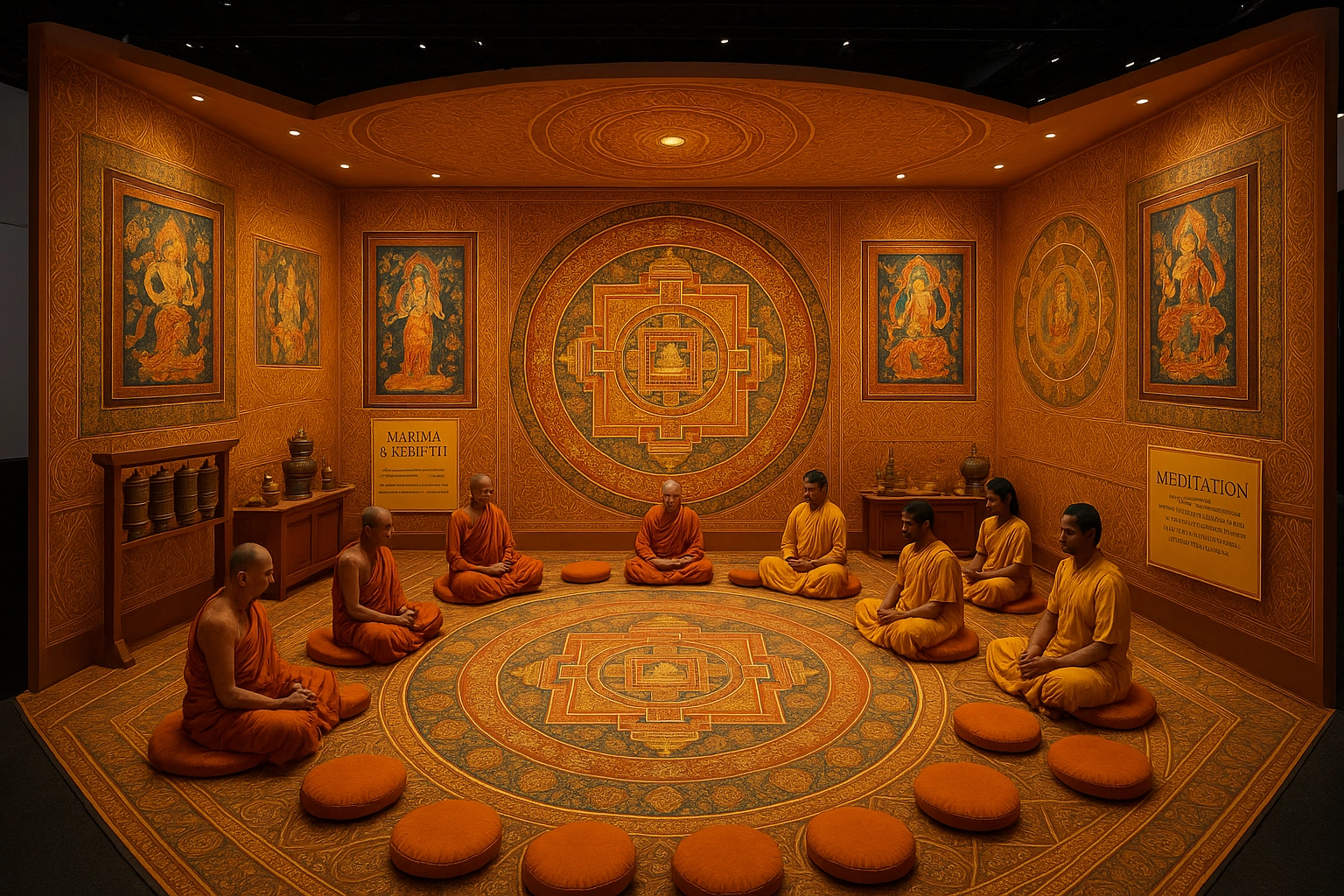Nepal: Buddhism & Hinduism Exhibition
Discover the sacred harmony and spiritual traditions of Buddhism & Hinduism in the heart of the Himalayas
Exhibition Layout & Experience

Exhibition Floor Plan
Interactive layout showcasing temple spaces, meditation areas, and sacred art galleries

Main Exhibition Hall
Featuring Buddhist stupas, Hindu temple artifacts, and interfaith displays

Sacred Harmony Display
Representing the unique coexistence of Buddhist and Hindu traditions in Nepal
Historical Origins
Nepal stands as one of the world's oldest crossroads of spirituality, where Hinduism's Vedic roots date back over 3,500 years and Buddhism emerged 2,500 years ago with the birth of Siddhartha Gautama (Buddha) in Lumbini. The region has nurtured both traditions in close proximity, fostering unique religious coexistence.
Emergence & Development
Hinduism first took root during the Vedic era, while Buddhism was born in the 6th century BCE with Buddha's enlightenment. Over centuries, Nepalese society developed a distinctive synthesis, with temples, festivals, and rituals frequently shared and blended between Hindu and Buddhist communities.
Key Spiritual Leaders
Siddhartha Gautama (Buddha)
Founder of Buddhism, born in Lumbini, Nepal; enlightened teacher and avatar of Vishnu.
Shiva (Pashupati)
Principal Hindu deity of Nepal, guardian of Kathmandu Valley.
Kumari (Living Goddess)
Unique tradition blending Buddhist and Hindu beliefs.
Core Beliefs & Concepts
Dharma
Righteous path followed by both Hindus and Buddhists.
Karma & Rebirth
Actions shaping future existence in both faiths.
Liberation
Moksha & Nirvana - freedom from cycle of birth and death.
Religious Harmony
Unity in diversity, interfaith worship and shared sacred spaces.
Fundamental Principles
Mutual Respect
Reverence for all deities, Buddhas, and enlightened beings.
Interconnectedness
Recognition of all life as sacred and interdependent.
Pilgrimage
Journeying to sacred sites as spiritual practice.
Community Service
Acts of charity and kindness as spiritual duty.
Sacred Symbols
Stupa
Buddhist monument symbolizing the enlightened mind of Buddha.
Shiva Lingam
Abstract Hindu symbol of cosmic creation and Shiva's presence.
Om & Mantra
Sacred syllables representing ultimate reality in both traditions.
Buddha Eyes
Wisdom Eyes symbolizing awakened awareness on stupas.
Major Rites & Ceremonies
Buddhist Puja
Chanting, circumambulation, and offerings at stupas and monasteries.
Hindu Puja
Ritual worship of deities, fire ceremonies, and temple processions.
Buddha Purnima
Celebrating Buddha's birth, enlightenment, and passing.
Tihar/Deepawali
Festival of lights shared by both Hindu and Buddhist communities.
Global Influence & Cultural Impact
Religious Pluralism
Nepal is recognized globally as a unique example of religious pluralism, where Buddhist and Hindu traditions have shaped art, philosophy, architecture, and social values throughout South Asia and beyond.
Cultural Treasures
The harmonious blend defines Nepalese national identity. Its festivals, rituals, temple art, and oral traditions are UNESCO-recognized cultural treasures with global significance.
Pilgrimage Destinations
Lumbini is an international Buddhist pilgrimage site, while Pashupatinath is among the most sacred Shiva shrines for Hindus worldwide, attracting millions of devotees annually.
Major Scriptures & Texts
Tripitaka (Buddhist Canon)
Core scripture of Buddhism, preserved in Sanskrit and Pali
Vedas & Upanishads
Foundational Hindu scriptures
Mahabharata & Ramayana
Hindu epics retold in Nepalese tradition
Sacred Places & Monuments
Lumbini
Birthplace of Buddha and UNESCO World Heritage site
Boudhanath Stupa
One of the largest stupas in the world, center of Tibetan Buddhism
Pashupatinath Temple
Holiest Hindu temple in Nepal, on the Bagmati River
Swayambhunath
Ancient hilltop stupa shared by Buddhists and Hindus
Memorable Quote
"When you realize how perfect everything is, you will tilt your head back and laugh at the sky."— The Buddha, born in Nepal